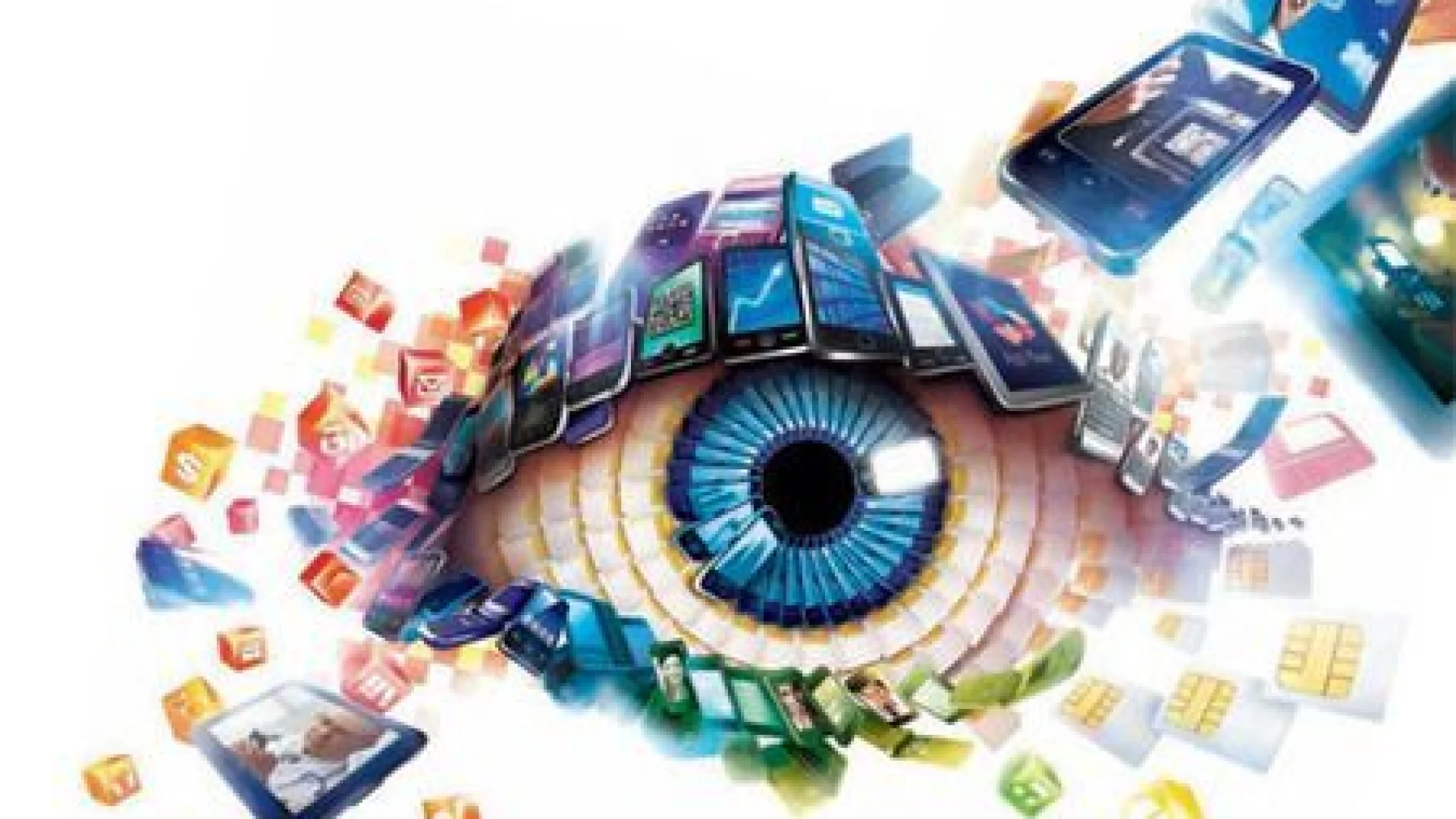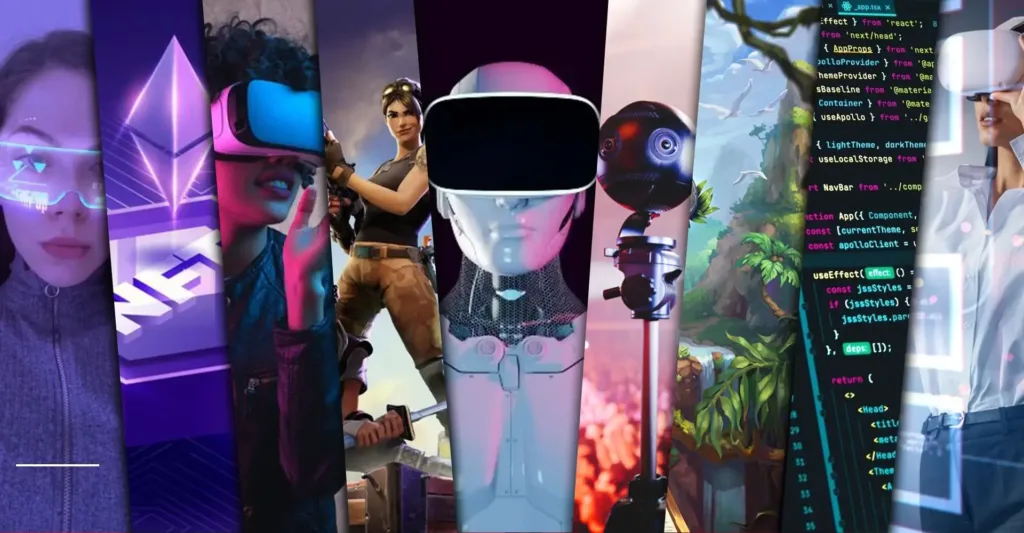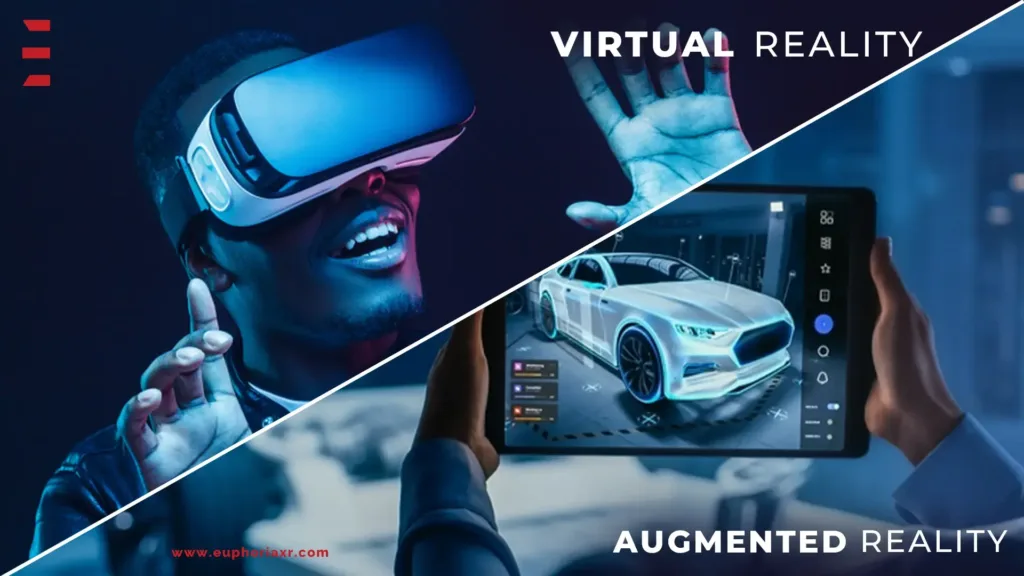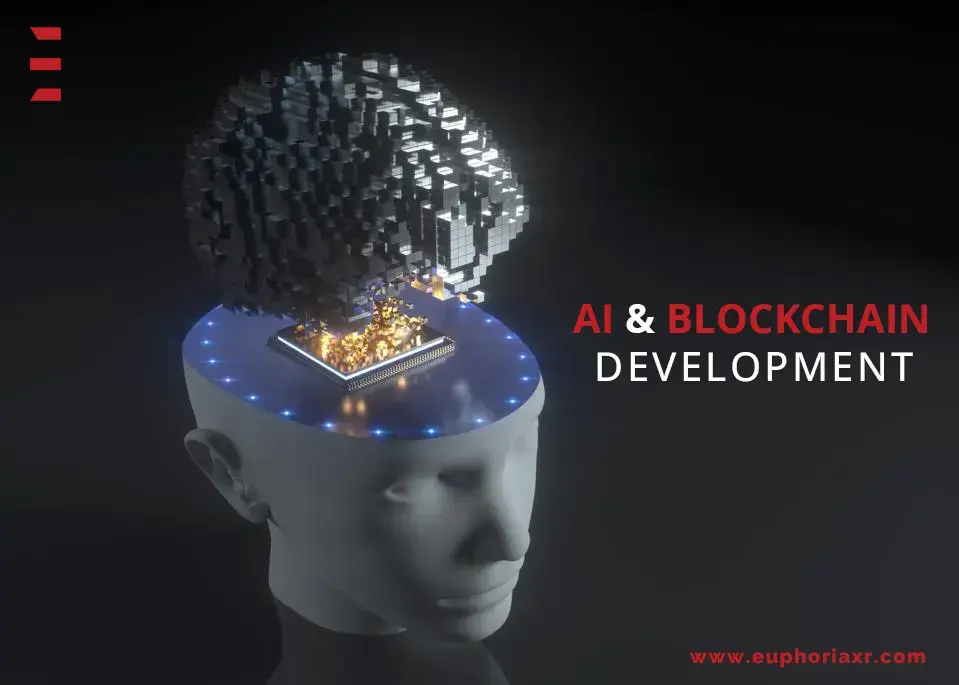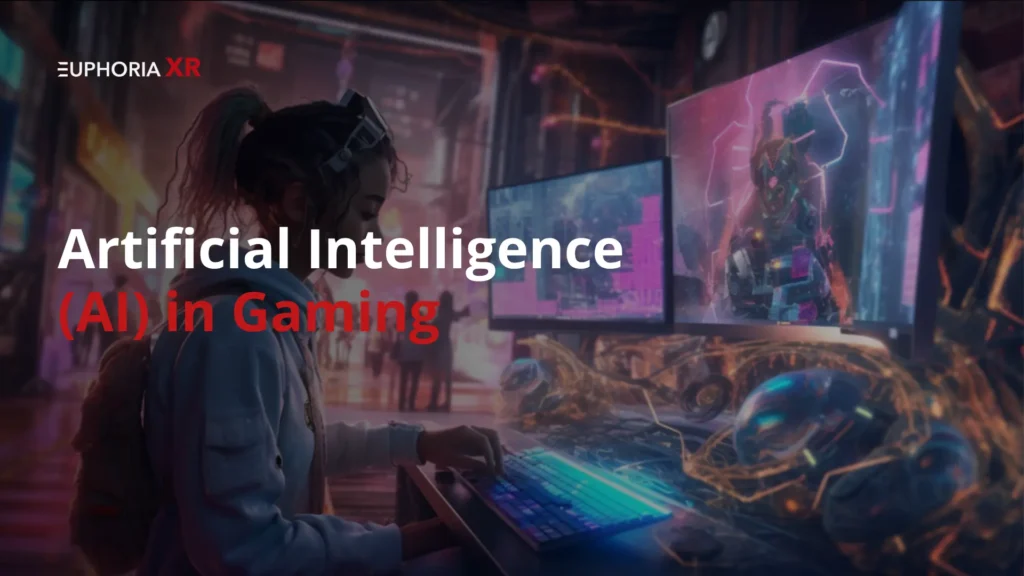As we eagerly anticipate the Top 10 Future Technology 2024, it’s fascinating to witness how quickly the world of technology is changing. Staying updated on the latest advancements is becoming increasingly essential. Approaching the year 2024, the pace of innovation is expected to accelerate, with exciting developments promising to revolutionize industries and impact daily lives significantly. Whether you’re a tech enthusiast, a business professional, or simply eager to know what the future holds, there’s a lot to look forward to. The next few years are poised to be a time of incredible technological innovation, with numerous advancements on the horizon that promise to change the way we live, work, and play. From cutting-edge developments in artificial intelligence and blockchain to emerging technologies like quantum computing and nanoengineering, the possibilities are seemingly endless.
In this blog, we will enlist the top 10 technologies that are set to transform the way we live and work in the coming years. Take a thrilling head of exploration with Euphoria XR, a pioneer in the technology sector. Euphoria XR is at the vanguard of innovation, causing change and transformation in a variety of industries, driven by a love for investigating the most recent breakthroughs and pushing the frontiers of what’s possible. Why then wait? Take an exciting journey of discovery with Euphoria XR and experience the future now.
Artificial Intelligence (AI) : Top Future Demanding Technology
One of the most important technological developments in recent years has been artificial intelligence (AI), and this trend doesn’t appear to be slowing down. Artificial Intelligence has become more than just a sci-fi idea; it is a reality that is already profoundly affecting our daily lives. As 2024 draws near, artificial intelligence (AI) is becoming more than just a catchphrase; it’s a field that is revolutionizing several industries and altering how we work and live. Artificial intelligence (AI) is changing how we interact with the world around us, from self-driving cars and predictive healthcare to virtual assistants like Siri and Alexa.
Artificial intelligence (AI) is already revolutionizing a number of industries, including manufacturing, healthcare, transportation, and finance. Artificial intelligence (AI) offers the potential to boost productivity, cut expenses, and enhance results in a variety of industries by performing routine tasks and offering insights and recommendations based on data analysis.
Several tech giants are leveraging the power of AI to improve their products and services. Open AI is dedicated to creating safe and beneficial AI, while Tesla is using deep learning algorithms to develop self-driving cars. Facebook and Meta are utilizing AI to personalize user experiences, detect harmful content, and improve ad targeting. Meanwhile, Google is using AI to provide intelligent insights, automate tasks, and improve decision-making in products like Gmail, Photos, and Maps. Euphoria XR pioneers AI innovation, addressing societal challenges and improving product quality through Computer Vision, Machine Learning, and advanced Language Models.
Artificial intelligence (AI) will remain a cornerstone of technological innovation as 2024 draws near, bringing about change and transformation in a wide range of industries. AI has the enormous potential to both improve our lives and find solutions to some of the most pressing global issues. The possibilities are endless. AI is a topic that is worth researching if you’re interested in the direction that technology is taking.
Quantum Computing
Although still in its early stages, the potential applications of quantum computing are vast and varied. One of the most promising applications is in the field of cryptography, where quantum computers can be used to break traditional encryption methods. Quantum computing can also be used to solve complex problems that are currently beyond the capabilities of classical computers, such as optimizing traffic flow in cities, predicting natural disasters, and designing new drugs and materials. Quantum Bits, also known as Q Bits, is a quantum computing company that is especially working on developing quantum computers that can perform complex calculations at a much faster rate than classical computers. Quantum computers use qubits, which are quantum bits, to perform calculations. Unlike classical bits, qubits can exist in multiple states simultaneously, which allows quantum computers to perform many calculations at once.
Overall, the possibilities of quantum computing are limited only by our imagination. As technology continues to advance, we can expect to see quantum computing play an increasingly important role in solving some of the world’s most complex problems and driving innovation in a wide range of industries.
Biotechnology
Biotechnology is a rapidly evolving field that combines the principles of biology and technology to create innovative solutions to some of the world’s most pressing problems. One of the most exciting areas of biotechnology is personalized medicine, which tailors medical treatments and therapies to an individual’s unique genetic makeup. By analyzing a patient’s DNA, biotechnology can identify the genetic markers that make them susceptible to certain diseases or conditions, and develop targeted treatments that are tailored to their specific needs.
Another area where biotechnology is making a significant impact is genetic engineering. With advances in gene editing technology, scientists can now modify the DNA of organisms with unprecedented precision. Biotechnology is also being used to develop new treatments for genetic disorders, such as sickle cell anemia and cystic fibrosis.In addition to healthcare, biotechnology is transforming a wide range of industries, from food production to environmental conservation.
Overall, the fusion of biology and technology in biotechnology is enabling us to tackle some of the world’s most pressing challenges in new and innovative ways. By harnessing the power of biotechnology, we can develop personalized treatments and therapies, create more sustainable and environmentally friendly products, and improve the quality of life for people around the world.
EDGE Computing
EDGE computing is a revolutionary technology that brings computational power closer to the data sources, allowing for real-time processing and reducing latency. This is achieved by placing computing resources at the edge of the network, where data is generated, instead of relying on a centralized cloud infrastructure. By bringing computing power closer to the source of the data, EDGE computing can improve the speed and efficiency of data processing, making it a game-changer in fields that require real-time data analysis. One of the main advantages of EDGE computing is its ability to reduce latency or the time it takes for data to travel from the source to the cloud and back. This is particularly important in applications that require real-time processing, such as autonomous vehicles, industrial automation, and smart cities. By processing data locally, EDGE computing can reduce the time it takes to make decisions and take action, enabling more efficient and effective operations.
EDGE Computing, powered by AWS Amazon Web Services, Microsoft Azure, and IBM, is redefining how we process and analyze data. With the ability to perform computations closer to the data source, EDGE Computing ensures low latency and opens avenues for real-time applications, especially crucial in the age of IoT.
Overall, EDGE computing is a powerful technology that has the potential to transform the way we process and analyze data. By bringing computational power closer to the source of the data, EDGE computing can reduce latency, improve efficiency, and enable real-time processing, making it an ideal technology for applications that require fast and reliable data analysis.
Cybersecurity
As the digital landscape continues to expand, the importance of Cybersecurity has become more critical than ever before. As internet, cloud, and mobile usage rise, the surge in cyber threats underscores the need for proactive cybersecurity measures. Cybersecurity refers to the practice of protecting computer systems, networks, and sensitive information from unauthorized access, theft, or damage. Cybersecurity measures are designed to prevent cyber threats such as viruses, malware, phishing attacks, and other forms of cybercrime.
The consequences of a cyber attack can be severe, ranging from financial loss to reputational damage and even legal action, while compromising sensitive data and intellectual property. Cyber attacks can cause significant disruption to business operations, leading to lost revenue, decreased productivity, and damaged customer relationships. Cybersecurity is not just about preventing attacks; it is also about being prepared for them. Organizations must have a robust cybersecurity plan in place to mitigate the damage caused by a cyber attack and minimize the risk of future attacks. As the digital landscape expands, so does the need for robust cybersecurity measures. Industry leaders like Cisco and Fortinet play a pivotal role in safeguarding data and systems.
With cyber threats becoming more sophisticated, cybersecurity is not just a technology but a necessity for individuals and organizations alike. As the digital landscape continues to expand, individuals and organizations need to invest in cybersecurity measures to protect their sensitive data and systems from cyber threats. By taking proactive measures to protect against cyber attacks, we can ensure a safer and more secure digital future.
Machine Learning
Machine Learning is another boosting technology that involves creating algorithms that enable systems to learn and improve from experience. Machine Learning algorithms analyze data, identify patterns, and make predictions based on that data. The more data the system is exposed to, the more accurate its predictions become, making it a powerful tool for a wide range of applications.
One of the main advantages of Machine Learning is its ability to automate complex tasks and improve efficiency. For example, in the field of healthcare, Machine Learning algorithms can be used to analyze patient data and identify patterns that may indicate the presence of a disease or condition. This can help doctors to make more accurate and timely diagnoses, leading to improved patient outcomes. Machine Learning is also being used in the field of finance to detect fraud and identify market trends. By analyzing large amounts of financial data, Machine Learning algorithms can identify patterns that may indicate fraudulent activity, such as unusual spending patterns or suspicious transactions. In addition, Machine Learning can be used to predict market trends, helping investors to make more informed decisions.
Google, Amazon, Microsoft, and Apple are currently employing machine learning to provide tailored and effective services. Google’s algorithms improve search and provide customized suggestions. Product recommendations are made by Amazon’s recommendation engine using user history. Machine learning is used by Microsoft’s Cortana virtual assistant to process natural language. Through conversations, Apple’s Siri gains accuracy. These digital titans are changing our lives by inventing clever devices. Overall, Machine Learning is a powerful tool that is transforming the way we analyze data and make decisions. By creating algorithms that allow systems to learn and improve from experience, Machine Learning is enabling us to automate complex tasks, improve accuracy, and make more informed decisions in a wide range of industries.
5G Technology
The fifth generation (5G) technology is transforming the way we connect to the internet. It promises to make our online experiences more seamless, responsive, and enjoyable by providing faster speeds and lower latency1. 5G is designed to deliver higher multi-Gbps peak data speeds, ultra-low latency, more reliability, massive network capacity, increased availability, and a more uniform user experience to more users2.
With 5G, users can expect to enjoy faster download and upload speeds, better streaming quality, and more responsive online gaming experiences. The technology is also expected to enable new applications such as remote surgery, autonomous vehicles, and smart cities1. The introduction of 5G Technology, supported by Huawei and Verizon, is revolutionizing connection. In addition to providing mobile users with speedier internet, 5G is driving advancements in augmented reality, driverless cars, and the Internet of Things (IoT).
In addition to enhancing our ability to stream high-quality video content and play online games, 5G is expected to enable exciting new applications, such as virtual and augmented reality, autonomous vehicles, and smart cities. As more and more devices become 5G-enabled, the possibilities for what we can do and achieve online will only continue to expand.
Internet of Things (IoT) : Latest IT Technologies
The Internet of Things (IoT) is a concept that describes the interconnectedness of physical devices, vehicles, buildings, and other objects that are embedded with sensors, software, and network connectivity. The IoT involves creating a network of data exchange between these devices, allowing them to communicate with each other and exchange information in real time. This communication can occur across different networks, devices, and platforms, resulting in a seamless and integrated experience for users.
The IoT has the potential to transform the way we live and work by enabling greater automation, improved efficiency, and enhanced safety. For example, smart homes equipped with IoT devices can monitor and control appliances, lighting, temperature, and security systems remotely, making life more convenient and secure. The Internet of Things (IoT) is an intricate network of interconnected devices, and major players like Amazon, Apple, Google, and Samsung are shaping this interconnected future. From smart homes to industrial applications, IoT’s influence is omnipresent. IoT-enabled factories can optimize production processes, minimize downtime, and improve worker safety. As more and more devices become interconnected, the possibilities of what we can achieve with the IoT are limited only by our imagination.
AR VR Technology
The emergence of Augmented Reality (AR) and Virtual Reality (VR) technologies has revolutionized the way we interact with digital content. AR and VR offer immersive experiences that allow users to engage with digital content in more intuitive and engaging ways than ever before.
AR Technology involves overlaying digital content onto the real world, enhancing our experience of it. This technology is used in various applications, including gaming, education, and healthcare. In healthcare, AR technology can be used to assist surgeons during complex procedures by overlaying digital images onto the patient’s body. VR technology, on the other hand, creates a completely immersive experience by simulating a virtual environment that users can interact with. At Euphoria XR, we harness VR Technology for diverse applications, from gaming to education and therapy. Our portfolio includes immersive VR gaming experiences like Pepsi VR Cricket, which stands as a mainstay VR headset gaming experience.
In the realm of therapy, VR aids patients in confronting challenges, while doctors benefit from guided assistance during surgeries. As AR and VR technologies continue to evolve, they have the potential to reshape the way we interact with digital content, making it more personalized, engaging, and intuitive.
Blockchain : Top Future Technology
Blockchain is a decentralized and secure ledger system that was first introduced as the underlying technology behind the popular cryptocurrency, Bitcoin. In simple terms, a blockchain is a digital ledger of transactions that is distributed across a network of computers, making it highly resistant to tampering and fraud. The decentralized nature of blockchain means that there is no single point of control or authority, making it highly transparent and resistant to censorship. Every transaction on the blockchain is verified by multiple computers on the network, making it virtually impossible to alter or delete any data once it has been recorded.
Blockchain, the decentralized ledger technology that powers cryptocurrencies, is becoming increasingly popular due to its transparent and safe nature. Businesses like as Microsoft, JP Morgan, IBM, Deloitte, and Deloitte are investigating a wide range of applications, ranging from supply chain management to financial transactions.
While blockchain technology was originally developed for use in cryptocurrencies, it has since found many other applications, including in supply chain management, voting systems, and digital identity verification. For example, blockchain can be used to create a transparent and secure supply chain network that allows businesses to track products from the point of origin to the point of sale, ensuring that they are authentic and safe for consumers. As this technology continues to evolve, we will likely see many more innovative applications of blockchain in various industries and sectors.
Shaping the Future: Embracing AR/VR Innovation in 2024 with Euphoria XR
It is crucial to stay up-to-date with transformative technologies, not just to keep pace, but to actively participate in shaping the future. As an organization that constantly seeks to innovate and stay ahead of the curve, we understand the importance of keeping a close eye on the ever-evolving AR/VR landscape. We recognize that AR and VR technologies are not mutually exclusive, but instead have a symbiotic relationship that can lead to game-changing innovations.
The advancements in AR technology, for example, can significantly enhance the immersive experience of VR, while VR technology can provide new and exciting ways to interact with AR content. As we continue to explore the possibilities of these technologies, we are thrilled about the endless opportunities they bring. From revolutionizing the way we learn, work, and play, to creating new avenues for collaboration and creativity, AR/VR Technologies have the potential to transform our world in ways we cannot yet imagine.
Whether you are a fervent enthusiast or a seasoned professional, the year 2024 presents an opportune time to welcome change, adapt, and delve into the limitless potential of technology. Leading the way in innovation, Euphoria XR is always pushing the envelope and bringing about change and transformation across a range of industries. So don’t wait any longer—join Euphoria XR on an exhilarating adventure of discovery to experience the future now.

